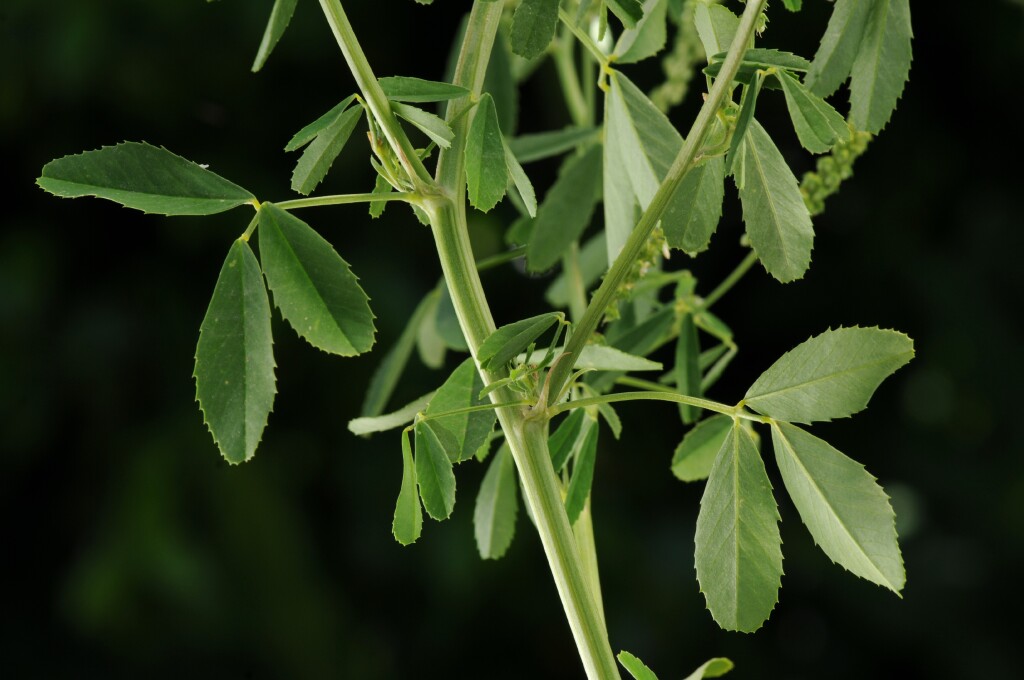Melilotus indicus
(L.) All. Sweet MelilotErect or ascending annual herb to 60 cm tall, strongly coumarin-scented, glabrous or sparsely hairy. Petiole 1.5–4 cm long; leaflets obovate, elliptic or oblong, 5–30 mm long, 2–15 mm wide, apices truncate or emarginate; stipules lanceolate, 5–10 mm long, margins entire or dentate at base. Inflorescence 2–12 cm long, mostly longer than subtending leaves, initially dense then elongating in fruit; peduncle 10–30 mm long. Flowers 10–60, pedicels c. 0.5 mm long; calyx 1.5–2 mm long, 5-veined, teeth about equal to tube; corolla 2–3 mm long, yellow; standard longest; wings equal to keel. Pod subglobose, 2–3 mm long, slightly compressed, reticulate-wrinkled, mucronate, green to brownish; seed 1, suborbicular, 1.5–2 mm long, minutely tuberculate, light brown. Flowers mainly spring.
LoM, MuM, Wim, GleP, Brid, VVP, VRiv, MSB, RobP, MuF, GipP, OtP, WaP, Gold, CVU, DunT, NIS, EGL, EGU, WPro, HSF, HNF, OtR, Strz, MonT. Naturalized all States. Native to the Mediterranean, Asia. Widespread across much of the State, usually in areas of cultivation and disturbance, and moderately salt tolerant.
Jeanes, J.A. (1996). Fabaceae. In: Walsh, N.G.; Entwisle, T.J., Flora of Victoria Vol. 3, Dicotyledons Winteraceae to Myrtaceae, pp. 663–829. Inkata Press, Melbourne.
 Spinning
Spinning




